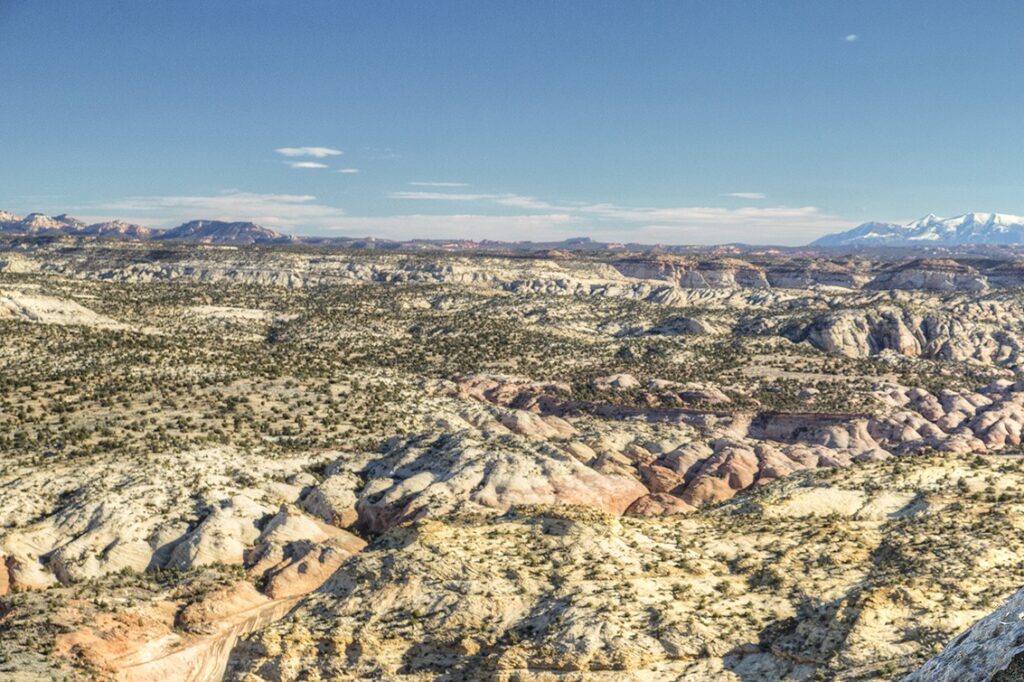Our obsession with the study of antiquities goes back centuries, at least since Renaissance poet Petrarch wrote, “Among the many subjects which interested me, I dwelt especially upon antiquity, for our own age has always repelled me.” But what exactly is antiquity? It is relevant this year because several western leaders are calling for a review of the Antiquities Act of 1906, which some even want repealed, claiming presidents have abused its broad authority.
Webster defines antiquity as a general description of ancient times, or the quality of being ancient (as in buildings). The plural “antiquities” more specifically refers to ancient relics (coins, statues, pottery), especially Greek ones. Wikipedia limits the definition mainly to relics from early civilizations of the Mediterranean and other Near Eastern cultures.
The term was commonly used in 19th Century America, though, to describe discovered relics of ancient native American cultures, especially pottery and arrowheads. An extensive network of antiquities collectors emerged, scouring the ruins and artifacts of ancient people, especially in the Southwest. By the 1890s there was widespread concern that all remaining relics would soon disappear, prompting Iowa Congressman John Lacey, already famed for sponsoring the first federal conservation enforcement laws, to push the Antiquities Act through Congress. President Theodore Roosevelt signed it into law – and made it the cornerstone of his own conservation legacy.
The Act streamlined the protection process by authorizing the president to create national monuments, “for the protection of objects of historic and scientific interest.” That definition is so vague that the Supreme Court later determined it meant whatever the president said. Using it to protect natural landscapes, not ancient relics or “antiquities” is the current controversy, but it isn’t new. Indeed, Roosevelt’s first national monument was not an ancient Indian ruin in the Southwest, but the natural rock formation, Devils Tower, in Wyoming. He eventually created six monuments at ancient historic sites, but also twelve others to preserve important scenic areas “of scientific interest,” including the Grand Canyon, Petrified Forest, and Natural Bridges.
The law provides that the size of national monuments shall be limited to “the smallest area compatible with the proper care and management of the objects to be protected.” In floor debates, Lacey was asked how much land would be involved and he replied, “not very much.” Another congressman asked if it “would be anything like the forest-reserve bill, by which 70 or 80 million acres of land in the U.S. have been tied up?” Lacey responded, “Certainly not.” Famous last words. Today the 294 monuments designated by presidents using that authority total over 777 million acres. President Obama alone designated 34 monuments totaling over half a billion acres. President Carter walled off 56 million acres of Alaska using the same tool, resulting in an Act of Congress limiting the size of future monuments in that state. Similarly, Congress was so angry at FDR for making Jackson Hole a national monument it prohibited any future monuments in Wyoming. No other limits have ever been set, and that is at the heart of today’s controversy.
That’s because a new strategy emerged during the Clinton Administration that ignored the tradition of consensus among affected communities and local officials, and created national monuments over the objections of the people who lived there. The environmental industry discovered a powerful tool for blocking economic activity, an end-run around the democratic process requiring no public involvement, economic or environmental analysis, congressional debate, or approval. Their favorite presidents have used it with a vengeance.
The best example was Grand Staircase-Escalante National Monument in Utah. Lawsuits followed, plaintiffs arguing that President Clinton exceeded his authority because the monuments were not limited to the smallest area necessary for protecting the designated objects. The courts backed Clinton without ever ruling on the size issue, leaving that for today’s political debates.
The controversy over the proposed Dolores Canyons National Monument is another perfect example. An environmental group – one which nobody ever heard of until the current debate started, meaning it was just created for this purpose – seeks to designate roughly 390,000 acres in Mesa, Montrose, and San Miguel counties as the latest national monument. If designated, it would be over the objections of both Mesa and Montrose Counties, and the town governments in the area. Its purpose has nothing to do with preserving the environment, since the area is already protected public lands. Rather, it’s all about trying to stop future economic activity in the nation’s richest uranium region, while the debate about future energy sources concentrates more and more on nuclear power. That has focused new attention on the Antiquities Act itself and whether this was ever its intended purpose.
The latest reform push started because of a new management plan for Bears Ears National Monument in Utah. The Monument totals 1.4 million acres. The draft plan designates two new “areas of critical environmental concern” covering 97,000 acres, and another 419,128 acres would be managed as lands with wilderness characteristics, a ninefold increase over the 49,000 acres already managed as wilderness. Off-highway vehicles would be banished from 569,971 acres, and livestock grazing would end on 169,529 acres. That totals 1,255,628 – almost the entire monument walled off from economic use.
When President Trump reduced that monument’s size, and President Biden reinstated the original acreage, some folks wondered why the big debate about the usually popular Antiquities Act. Now they know.





Comments on this entry are closed.